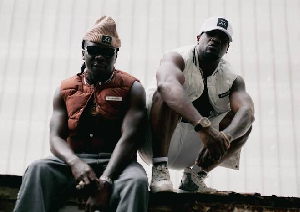THE US ECONOMY FROM THE BRINK.....A lesson for Ghanaian policymakers!
If Ghanaian policymakers truly want to learn how to boost the housing sector in our country today, they should come to the United States to see and learn how the Federal Housing Administration, FHA, has revolutionized their lending practices to help boost the housing sector and the American economy today.
Very simply, the FHA formula works this way: Loan money at very low interest rates, require very low down payments from the borrower, but secure the loan to the lender with an insurance policy paid for by the borrower. It is a win-win situation for both borrower and lender because, unlike Ghana where you need a minimum 25% down payment to purchase your home, you only need 3.5% down for an FHA loan in the US. It is a win for the lender too because in case of default, the lender is secured by an insurance policy, paid for by the borrower, which makes up the loss in foreclosure. Interest rates on home loans in the US today are below 5%, compared to 15% in Ghana today. This also makes a whole lot of difference how much your mortgage payment is on your loan in Ghana compared to your loan in the US.
The FHA loan has been around in the US for seventy-five years now, but was almost wiped off the face of the earth in the days when the subprime loan was king. Today, with the subprime loan almost a dream, FHA has returned to its glory once more. It doesn’t surprise policymakers here in the US at all that the FHA is truly fulfilling its original mission today when the American economy is in shambles. It was during the Great Depression, in 1934, when the FHA was originally established to help the US recover from the economic debacle of that period. Today, after 75 years, the FHA has insured more than 34 million home mortgages throughout the US and has helped to grow and stabilize the housing market in very difficult times.
Just like today, when the FHA was established in 1934, the US was in very desperate times: massive job losses and aggressive and outrageous mortgage terms made it extremely difficult for Americans to afford a home loan in those days. It was the era of the Great Depression when the banking industry failed, just as we have today. Banks retreated from making home loans and homeownership tanked. Just like it is in Ghana today, most home mortgages were short-term, almost no amortization, balloon payments galore, and loan-to-value ratios were below 50 or 60 percent. The banking crisis of the 1930s scared so many lenders to recall their loans. Refinancing as we know it today was non-existent then and many borrowers could not make their mortgage payments, resulting in many homes being foreclosed. Indeed, only 40% of Americans owned their homes in those days compared to 70% today. The FHA changed all that! When war veterans returned from the war front in the 1940s, the FHA helped them into homes the same way the GI Bill helped them into colleges and universities.
The FHA again helped ensure the continued availability of rental housing for the elderly, the disabled, and the poor over the years by insuring loans for multifamily developments. The FHA again stabilized the housing market when recession forced many lenders and private mortgage insurance companies to pull out of oil-producing states in the US during the 1980s.
Today, the FHA has become a big source of mortgage financing in the US, moving from 2% of the market to over one-third of mortgages in the US. FHA’s terms are so generous it even allows the borrower’s down payment to come from a gift by a family member. FHA loans are insured through a combination of a small Upfront Mortgage Insurance Premium (UFMP), currently 1.75% of the loan amount, and a Monthly Mortgage Insurance (MMI) premium, currently 0.55% of the loan amount spread over 12 months. The UFMP is the upfront fee you pay in cash at the close of escrow or could be financed into the loan. The MMI is your monthly insurance premium which is included in your monthly payment, and must be paid for at least the first 5 years no matter the size of your down payment. If your loan-to-value reaches 78% or less after the first 5 years, this MMI is cancelled. The 5-year rule does not apply when your loan term is 15 years or less.
There are a variety of mortgage products sold by the FHA – from Fixed Rate Mortgages to Adjustable Rate Mortgages and Graduated Mortgage Payments to Energy-Efficient Mortgages. Applicants must meet the credit, income and employment criteria established by the FHA to qualify for any of these loans.
Indeed, as late as 2006, the FHA only had less than 3% of all mortgage loans originated in the US, therefore leaving doubts on Congress about its necessity and efficacy. Over the last two years, however, with the collapse of the credit markets, the mortgage meltdown and the world-wide economic recession, the FHA has become a force to reckon with again, even taking on such social obligations as foreclosure prevention – helping hundreds of thousands of distressed homeowners to avoid foreclosure. The FHA currently owns more than one-third of all mortgages in the US today and that’s one big lesson Ghanaian policymakers could take a hard look at and learn from completely if they are serious about making any impact whatsoever on the housing industry in Ghana. This rapid and revolutionary development in the life of this mortgage giant is what is sustaining the US housing sector today and it is fertile ground for those who yearn to adopt policies that could revolutionize their own economies around the world as well.
Any takers in Ghana?
Peter Atsu Tsikata
Los Angeles, California
Web site: http://4ghanarealestate.blogspot.com
Opinions of Sunday, 22 November 2009
Columnist: Tsikata, Peter Atsu














